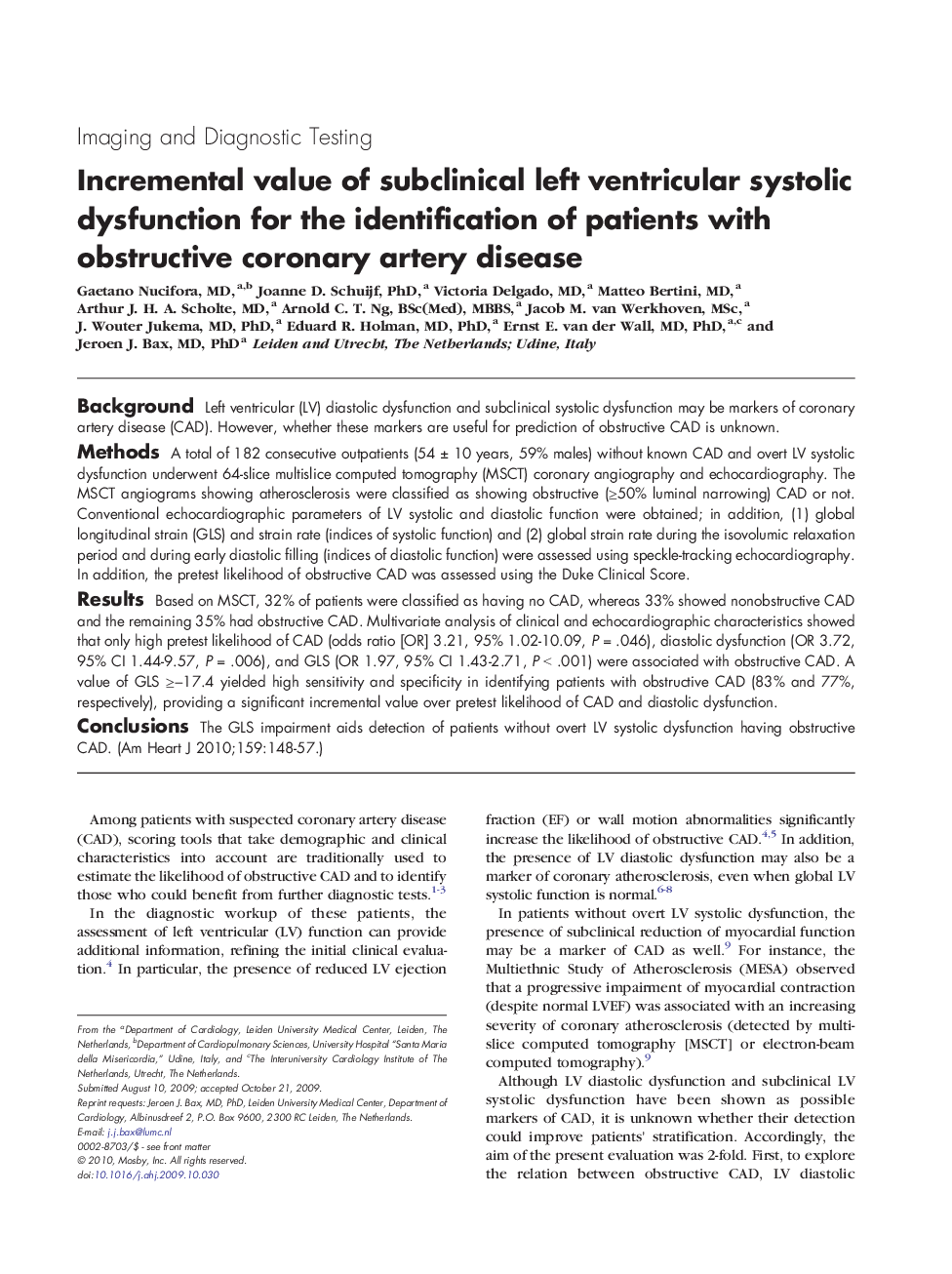| کد مقاله | کد نشریه | سال انتشار | مقاله انگلیسی | نسخه تمام متن |
|---|---|---|---|---|
| 2851118 | 1167836 | 2010 | 10 صفحه PDF | دانلود رایگان |

BackgroundLeft ventricular (LV) diastolic dysfunction and subclinical systolic dysfunction may be markers of coronary artery disease (CAD). However, whether these markers are useful for prediction of obstructive CAD is unknown.MethodsA total of 182 consecutive outpatients (54 ± 10 years, 59% males) without known CAD and overt LV systolic dysfunction underwent 64-slice multislice computed tomography (MSCT) coronary angiography and echocardiography. The MSCT angiograms showing atherosclerosis were classified as showing obstructive (≥50% luminal narrowing) CAD or not. Conventional echocardiographic parameters of LV systolic and diastolic function were obtained; in addition, (1) global longitudinal strain (GLS) and strain rate (indices of systolic function) and (2) global strain rate during the isovolumic relaxation period and during early diastolic filling (indices of diastolic function) were assessed using speckle-tracking echocardiography. In addition, the pretest likelihood of obstructive CAD was assessed using the Duke Clinical Score.ResultsBased on MSCT, 32% of patients were classified as having no CAD, whereas 33% showed nonobstructive CAD and the remaining 35% had obstructive CAD. Multivariate analysis of clinical and echocardiographic characteristics showed that only high pretest likelihood of CAD (odds ratio [OR] 3.21, 95% 1.02-10.09, P = .046), diastolic dysfunction (OR 3.72, 95% CI 1.44-9.57, P = .006), and GLS (OR 1.97, 95% CI 1.43-2.71, P < .001) were associated with obstructive CAD. A value of GLS ≥−17.4 yielded high sensitivity and specificity in identifying patients with obstructive CAD (83% and 77%, respectively), providing a significant incremental value over pretest likelihood of CAD and diastolic dysfunction.ConclusionsThe GLS impairment aids detection of patients without overt LV systolic dysfunction having obstructive CAD.
Journal: American Heart Journal - Volume 159, Issue 1, January 2010, Pages 148–157